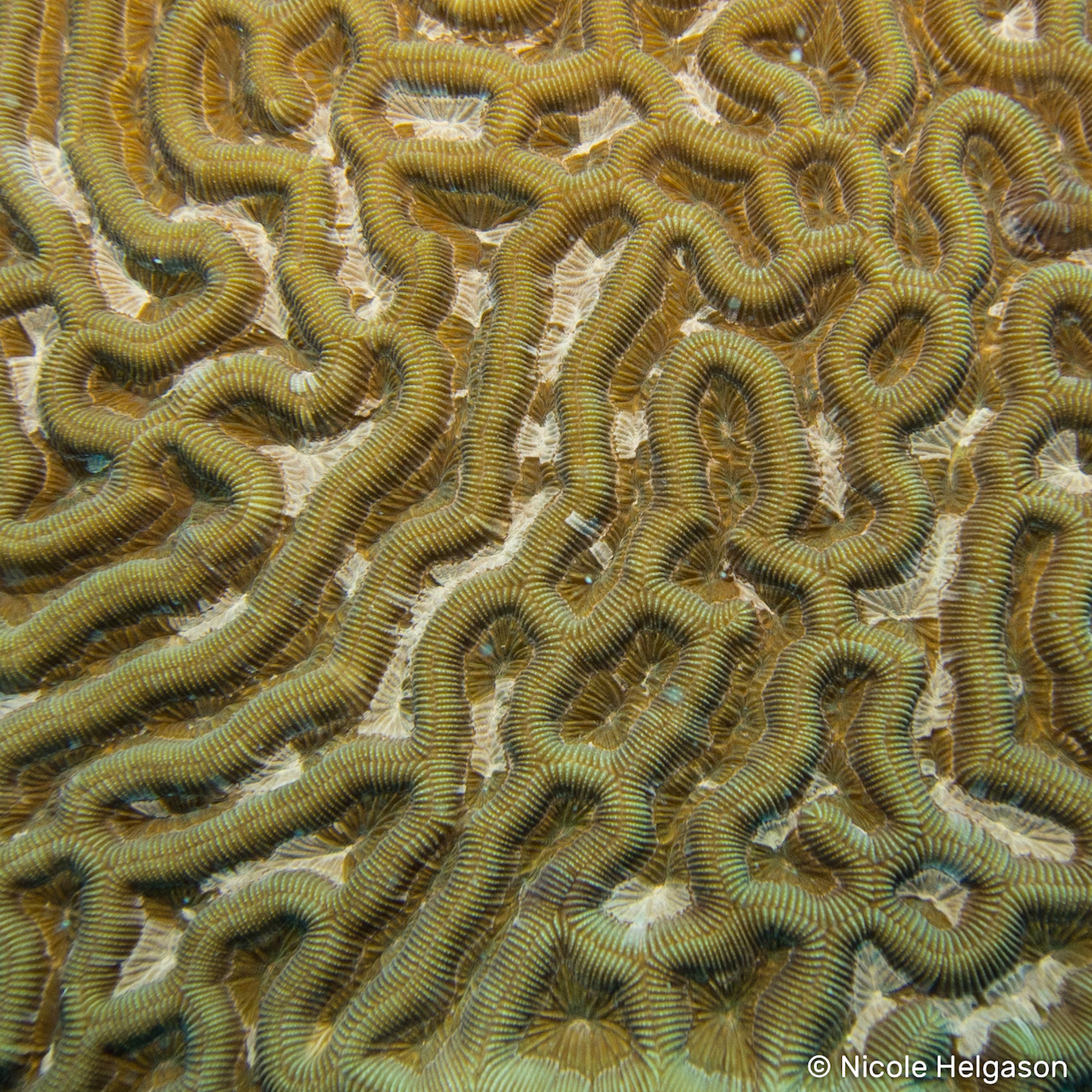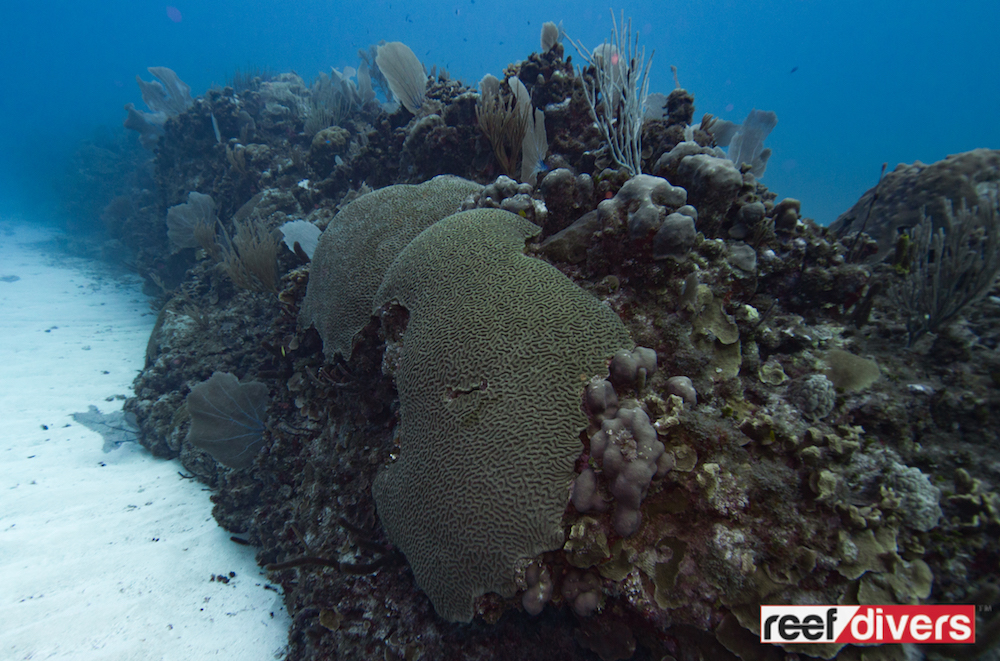Colpophyllia natans
Colpophyllia natans is a dominant reef-building coral with wide meandering valleys stretching across the entire surface of the coral colony. This coral forms impressive domed boulders and is one of the most common corals in the Caribbean.
Colpophyllia is a familiar species on shallow reef ledges and slopes. It can be found down to a depth of 165 feet but often established much closer to the surface.
Colpophyllia falls into the brain coral category, and there are few tricks to tell it apart from other species. First off Colpophyllia coral can grow into very large boulders, this is how it gets the common name boulder brain coral. But if you’re met with a smaller colony, you have to look closer at the small lines running from the top of the ridges to the center of the valleys.
The ridges of Colpophyllia remind me of a millipede, and that is how I remember this species. To me the meandering ridges resemble the back of the millipede with the legs trailing into the valleys.

The only known species of Colpophyllia is Colpophyllia natans. This coral is in the Mussidae family and is related to Meandrina, and Diploria which have similar grooves running from the top of ridges to the center of the corallite.
Boulder Brain Coral
The common name for Colpophyllia natans is the Boulder Brain Coral as it forms impressive boulders several meters across. As this coral dies and the tissue recedes the skeleton is left adding rocky structure to the reef. This why we consider C. natans a reef-building coral.
During the day the polyp are retracted inside the corallite, however, at night polyps will emerge and sticky tentacles will inflate to catch plankton in the current. Colpophyllia natans can be brown, tan, gray or white, while some colonies have dark ridges with vibrant green valleys. Most often ridges and valley will be of contrasting color.

The Coral Diaries series is a list of corals we have seen while diving around the world. We’ve created this series so that you can learn more about corals, and how to identify them on the reef. We encourage you to send us your coral pictures and leave a comment in the section below to learn more about the interesting species you’ve found while diving.


